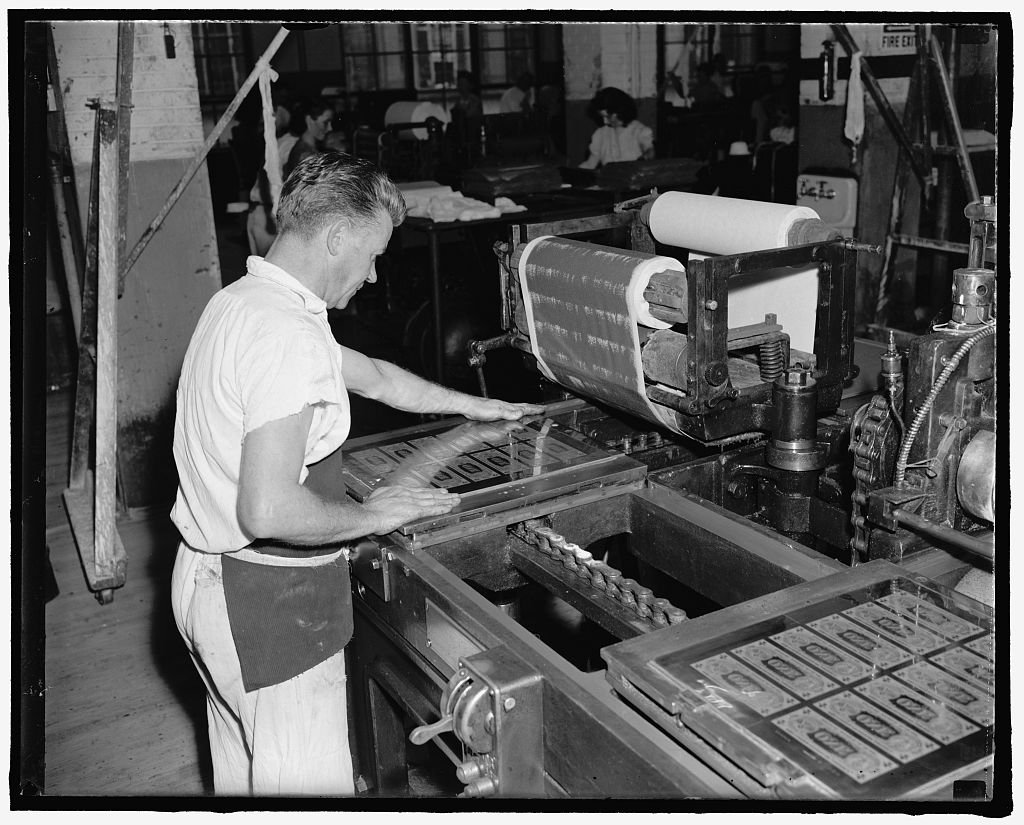Printing $1 Backs in the 1930s
Here we are printing the backs of $1 Silver Certificates in the late 1930s.
The printer is standing at a four-position flatbed press and is inspecting the inked plate before it moves on to print a sheet. At the next station, an assistant will place a sheet on the plate and then it will run through the press, creating a printed sheet. Another assistant would lift off the printed sheet, and the plate would run through the automatic inker and back to the printer, starting the process over again.
These plates have 12-subjects. As this is still the era of wet printing, larger sheets and plates were not possible because the expansion and contraction of the sheets from the wetting process would cause registration problems. It would take until the 1950s and the invention of non-offsetting inks and dry printing that banknote printers could start using rotary presses.
The design of the back being printed was finalized by President Franklin Roosevelt personally in 1935 and has images of the Great Seal of the United States. (Read more about this here.) This design still appears on current $1 Federal Reserve Notes.

